Kazakhstan's Golden Burials
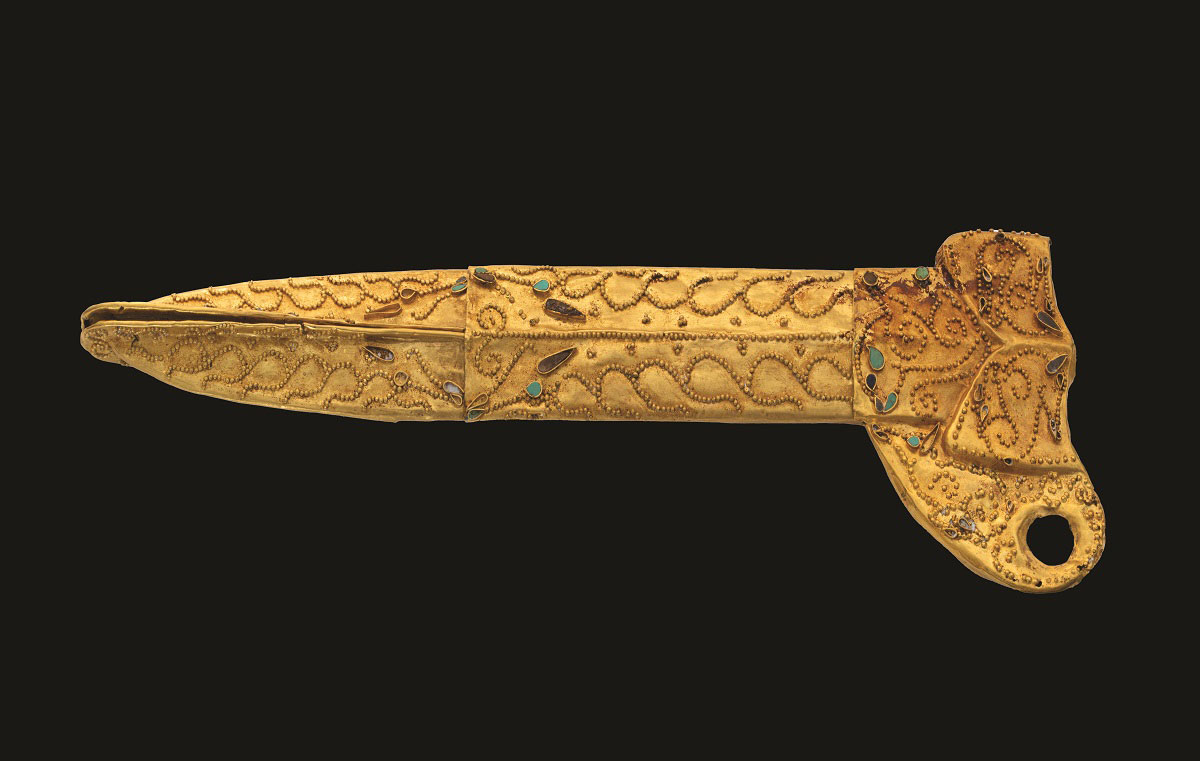
The Greek historian Herodotus tells us that among the Scythians, the nomads of the Eurasian steppe, there was a group of ‘gold-guarding Griffins’. Were these people the Saka, whose elite filled their tombs with golden depictions of griffins and other creatures? As a new exhibition on the Saka opens, Rebecca Roberts and Saltanat Amir explore one recently discovered burial and what its contents can tell us about this ancient culture.

More than 2,700 years ago, two teenagers were buried side by side in a strange and beautiful landscape. Cradled by low mountains and crossed by streams, the Eleke Sazy valley lies in the easternmost corner of Kazakhstan, not far from the border with China. Here, on a natural ridge rising up out of the swampy terrain, a wealthy family placed their deceased teenage children in wooden coffins, sealed them in a log cabin encased in a stone chamber, and used turf, stones, earth, and clay to construct a huge mound over them, taking care to reinforce the western side, perhaps perceived to be vulnerable to a ritual threat. Boulders from the rivers were carefully selected and used as a crepidoma, or platform, to support the earthen structure. More river stones were chosen for their colouring and were placed in a double ring encircling the mound. As a last act of this great funerary rite, a ditch was dug to enclose the mound. The boy was no older than 18, on the verge of adulthood. The girl, most likely his sister, was around 13-14 years old. We do not yet know how they died, or if they died together. Over time, part of the inner chamber collapsed, and the boy was hidden by stones. When looters broke into the burial mound, they saw only the girl. They grabbed all they could find, stripping her of nearly all her grave goods, and scattering her bones in the process. Miraculously, the teenage boy was left undisturbed until his discovery by Kazakhstani archaeologists a few years ago.
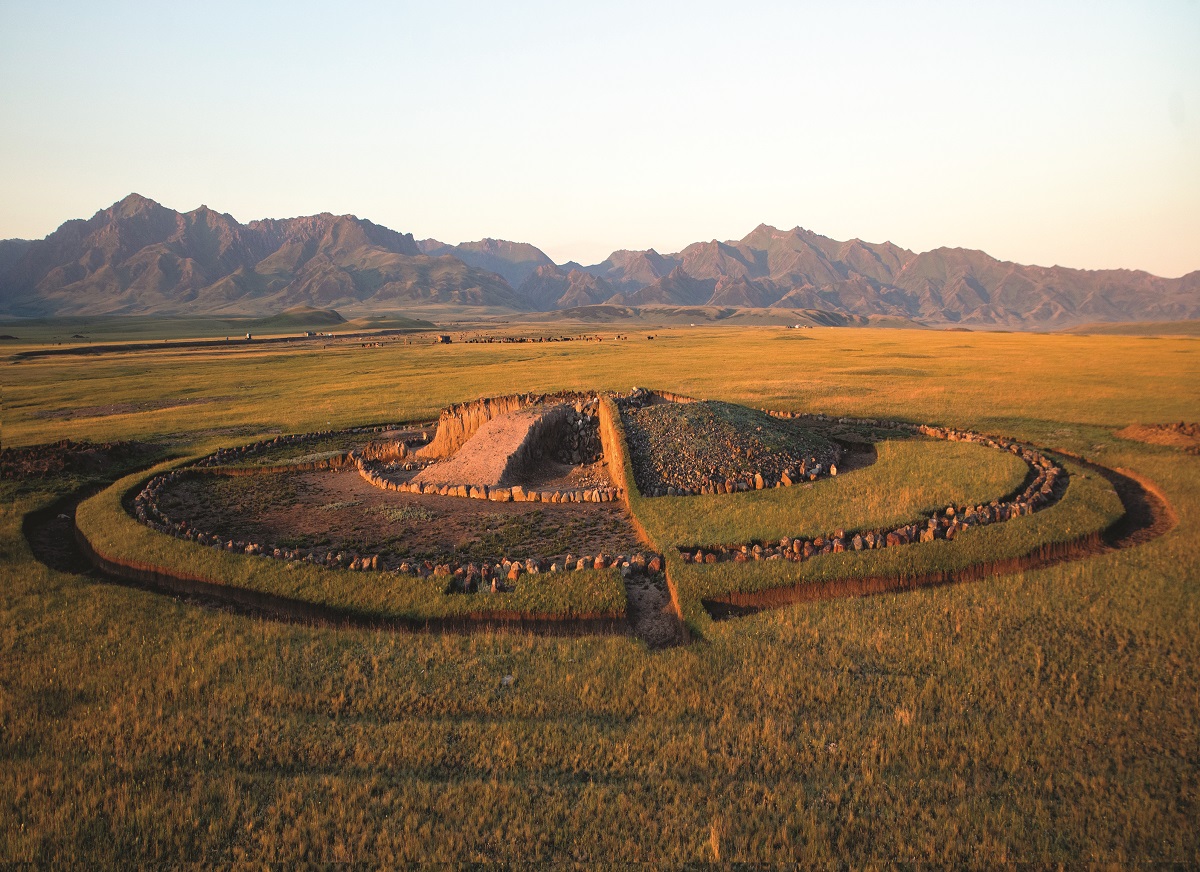
Kurgan 4 in the Eleke Sazy valley, where two Saka teenagers were buried. (Image: © Yevgeniy Domashev, instagram: @ megalara_garuda)
Through careful excavation of the burial mound, Kazakh archaeologist Zainolla Samashev came to understand the stages in its construction, the care taken in the selection of building materials, and the ritual practices that might have been encapsulated within its architecture. Known, rather unromantically, as Kurgan 4 of Eleke Sazy Group II, the mound (or kurgan) harboured a sensational treasure at its core, revealed in 2018: the intact Iron Age grave of this young male warrior of the Saka people, only the second undisturbed burial of its kind to have been discovered on the territory of Kazakhstan. Radiocarbon dated to between 800 and 550 BC, the teenage boy was buried with a combined bow-case and quiver, known as a gorytos, and a type of dagger known as an akinakes. Both are classic weapons of Scythian warriors (both male and female), and these ones were richly decorated with golden ornaments in the so-called ‘animal style’, a fluid and energetic depiction of animals in dynamic poses, their limbs folded under them, heads turned back, with muscles straining mid-movement. What, then, was the relationship of the Saka people to the Scythians? The Saka left no written history of themselves, and so the answer can be found partly in how they were described by other ancient writers who saw them as the barbarian ‘other’, partly in a recent genetic study, and partly in the artefacts they left behind.
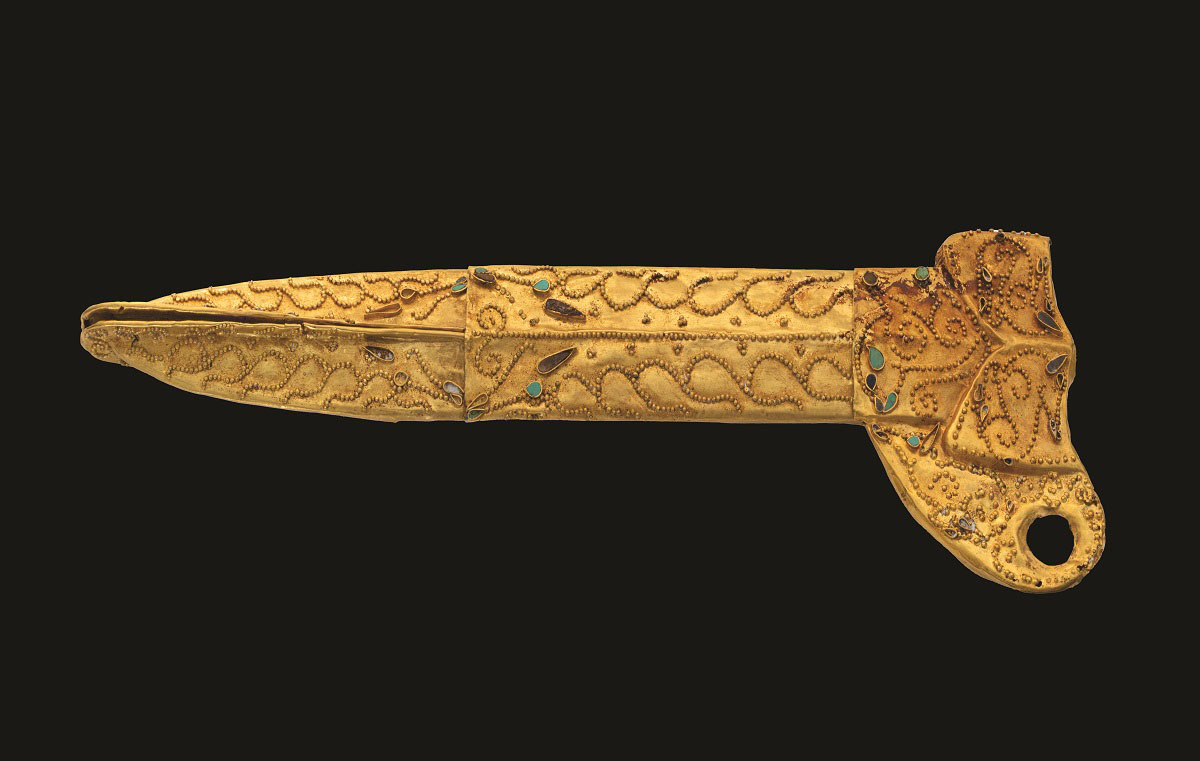
The ancient Greeks and Persians gave vivid accounts of highly mobile, horse-mounted warrior peoples occupying the vast Eurasian steppe. In ancient Persian sources, ‘Saka’ is used interchangeably with ‘Scythians’, although ‘Saka’ is generally attributed to the easternmost peoples of the Great Steppe. It remains the term used in Kazakhstan today to describe these Iron Age peoples. In the 5th century BC, Herodotus of Halicarnassus wrote his Histories. He uses the term ‘Scythians’ to describe those groups occupying the region north of the Black Sea, while also naming many other tribes to the east who wore the same clothes and shared the same culture. Pan-Scythian material culture is remarkable in its geographic scope and longevity; while regional differences are apparent, the homogeneity of social and artistic expression across the different Iron Age peoples of the steppe is striking. They had in common high mobility, horse-riding, shared forms of weaponry including a composite bow designed to be fired while on horseback, and the ubiquitous ‘animal style’ in artistic expression.
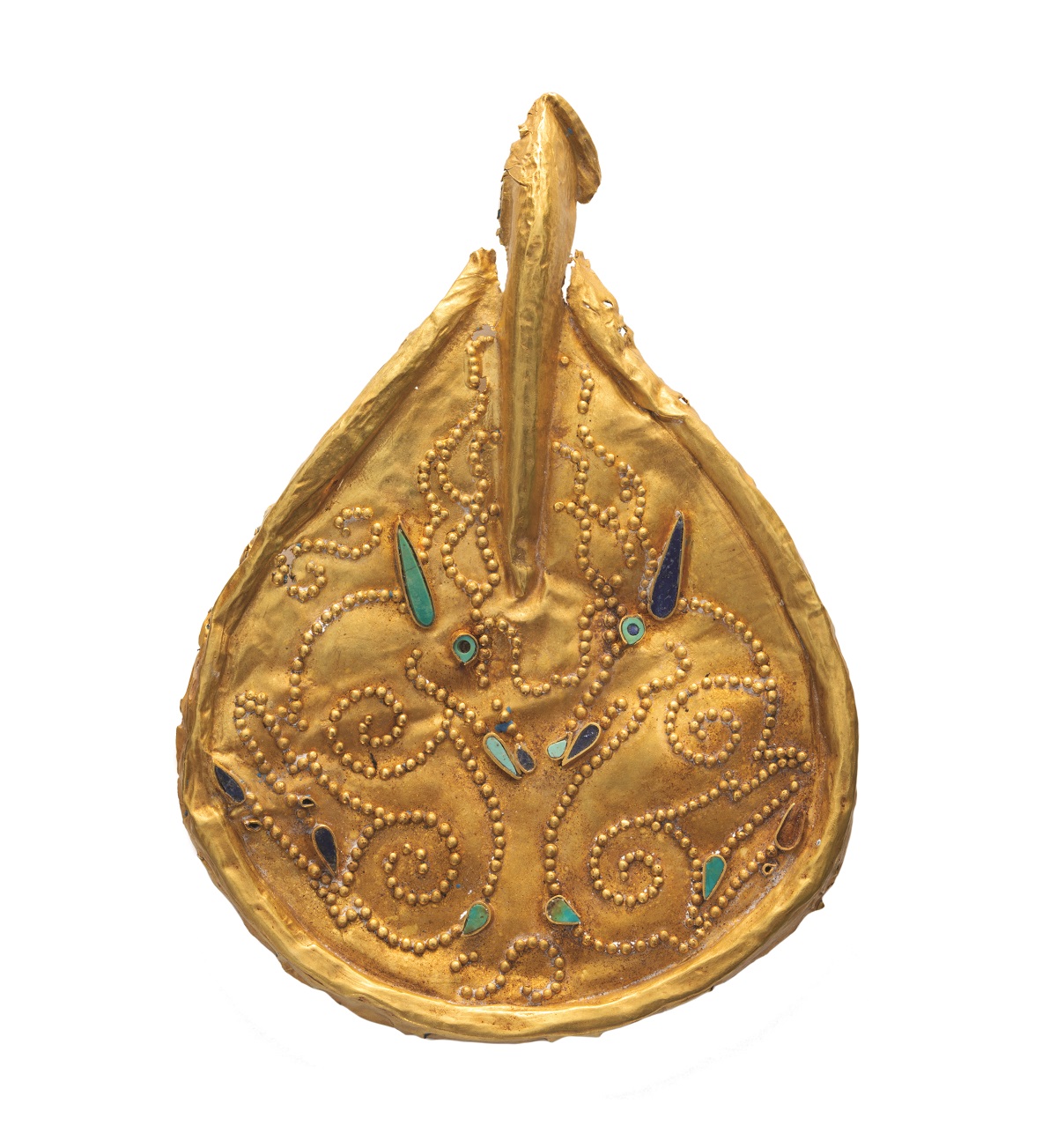
New genetic evidence supports Herodotus’ view that there were many groups who shared a common material culture, but who were distinct. A recent study of Iron Age steppe populations was led by Guido Gnecchi-Ruscone at the Max Planck Institute for the Science of Human History in collaboration with Kazakhstani colleagues. It revealed that, from complex mixing of populations during the Bronze Age, two major gene pools gave rise to the Saka and other groups to the east in the Altai region, and to the Sarmatians to the west in the Urals. The Saka were among the earliest of these groups to emerge from around 900 BC, a fact that is borne out in the very early dates of many of the kurgans found at the Eleke Sazy cemetery.
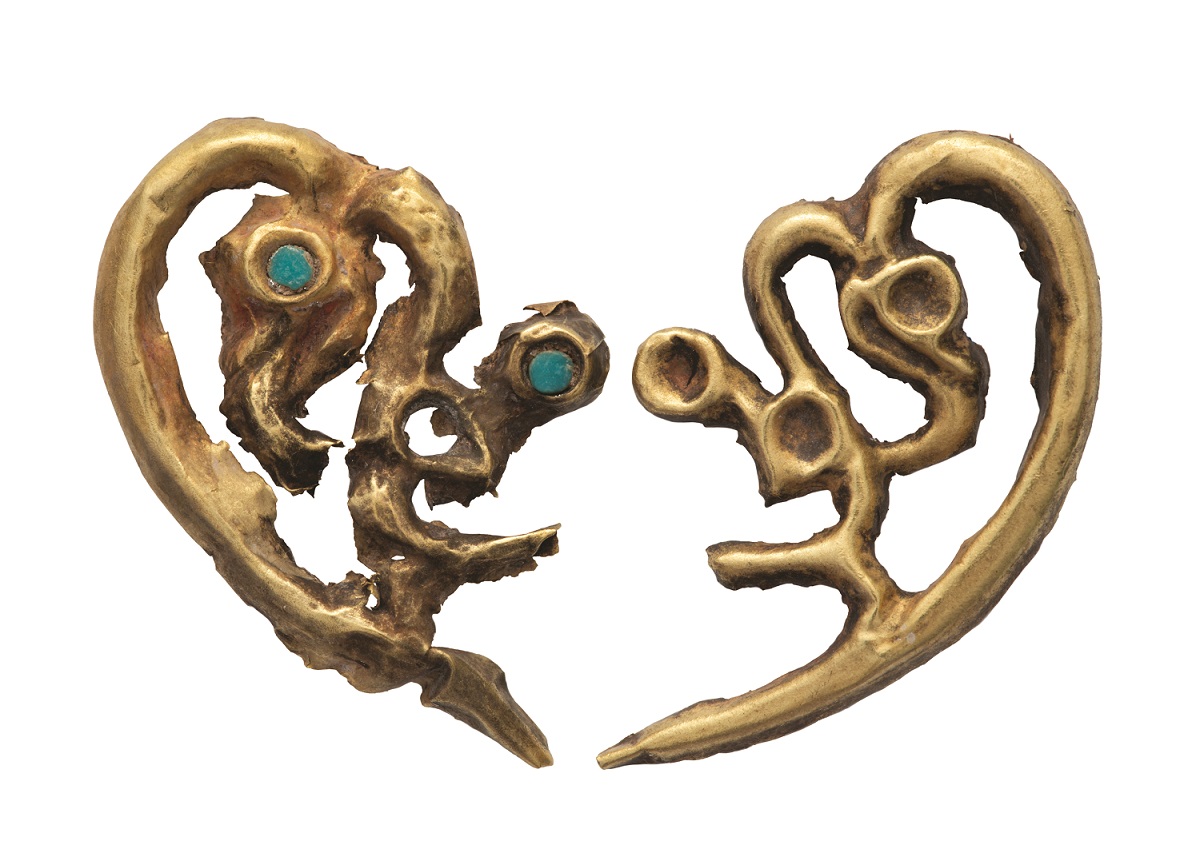
Gold plaques depicting an eagle-griffin clutching a snake in its talons, found at Shilikty, Kazakhstan. The snake forms part of the bird’s body. 8th-6th century BC. Size: 1.6 x 3cm (each). (Image: © Fitzwilliam Museum/East Kazakhstan Regional Museum of Local History)
This is an extract of an article that appeared in Minerva 192. Read on in the magazine (click here to subscribe) or on our new website, The Past, which details of all the content of the magazine. At The Past you will be able to read each article in full as well as the content of our other magazines, Current Archaeology, Current World Archaeology, and Military History Matters.

